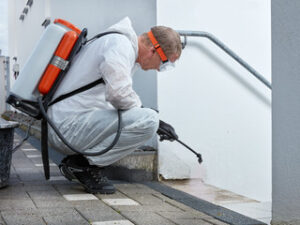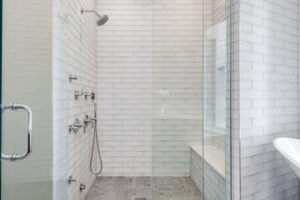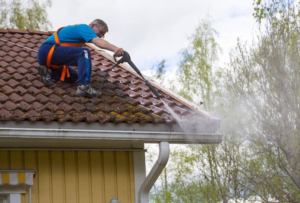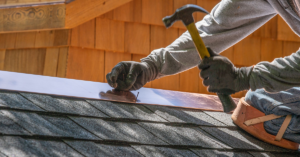Gutter cleaning is a necessary part of home maintenance. Clogged gutters can damage your roof, house siding and foundation. Regular cleanings can help to reduce the frequency of these problems.
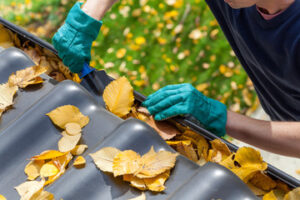
Start by putting on safety goggles and gloves. Position the ladder so you can reach each section without leaning or overreaching.
The cost of gutter cleaning depends on the size of your home and the length of your gutters. The majority of the cost is labor, which can range from $50 to $150 per hour for professionals. The price of materials and equipment also varies. Gutter systems that are extremely clogged may require extra time and work. Additionally, some gutter contractors charge a travel fee, which can be based on your location or your contractor’s service area.
Gutter cleaning services typically include removing debris, bagging it, and flushing your gutters. Many companies also offer additional services, such as inspecting and tightening your gutters. They can also install gutter guards that stop leaves, pine needles, and the smallest debris, including dirt, shingle grit, and pollen from entering your gutter system. Gutter guards can reduce the need for regular gutter cleaning and maintenance, saving you money in the long run.
When you neglect to clean your gutters, they can become overflowing with debris and water. This can damage the roof of your house and cause water leaks inside. Additionally, standing water can destroy your driveway and garden and create a habitat for mosquitoes and other pests. Gutter cleaning prevents this, and helps you maintain the beauty of your home’s exterior.
It’s recommended to clean your gutters at least twice a year to avoid overflowing and blockages. However, the frequency may vary depending on the condition of your home’s roof and the conditions in your local environment. For example, if your house is close to trees or shrubbery, you may need to do more frequent cleaning.
Although the cost of gutter cleaning can be high, it’s a necessary maintenance task for your home. If left unchecked, clogged gutters can cause severe water damage to your home’s foundation, siding, and roof. Moreover, if you live in a wildfire-prone area, regular gutter maintenance is essential to ensure that embers don’t clog your gutters and start a fire. By having your gutters cleaned regularly by a professional, you can avoid costly repair and save on utility bills. Moreover, a clean gutter adds curb appeal to your home and improves its resale value.
Frequency
Gutter cleaning is a vital home maintenance task that should be done at least twice a year. It can help to prevent water damage to roofs, siding, and foundations. It also helps to protect landscaping projects. In addition, it can increase the overall value of a property. However, gutter cleaning is not a job for amateurs. It requires proper safety measures, and hiring a professional company is the best option.
A gutter that is clogged with leaves and debris will stop rainwater from flowing away from the house, which can lead to flooding in the basement and structural damage. It is also a fire risk, as the accumulated debris can become highly flammable. In addition, mosquitoes and other pests breed in standing water. If you don’t clean your gutters regularly, they can rust and eventually break, causing significant damage to your home.
The frequency of gutter cleaning depends on many factors, including the type of trees around your house and local weather conditions. For example, deciduous trees shed their leaves in the fall, while evergreens can shed needles all year round. If you have a lot of trees near your house, more frequent gutter cleaning is needed to eliminate debris buildup.
Another factor that affects gutter cleaning is the height of your building. A higher building can be more difficult to access, and the cost of gutter cleaning may increase. The crew’s labor will be more expensive, and there may be a long carry fee if the equipment needs to be brought a distance to the job site. The crew may also need to erect scaffolding to work on the roof or gutter system, which can increase the overall cost of the job.
Once the gutters are cleaned, a post-cleaning inspection is recommended to identify any problems and repair them promptly. This is particularly important in cold climates, where water trapped in the gutters can freeze and cause ice dams that may lead to leaks inside the home. It is also a good idea to examine the gutter downspouts, which are critical for funneling rainwater away from the house and into the ground.
Safety
Gutter cleaning involves working from a ladder or roof, which can pose several safety risks. Using the wrong ladder, faulty climbing equipment, or working in hazardous conditions can lead to serious injuries or even death. Prioritizing safety measures can prevent these risks and ensure a safe and effective gutter cleaning experience.
One of the most significant hazards associated with gutter cleaning is falling from a ladder or roof. This is most common when the homeowner rushes through the process, fails to use a harness or tie-off rope, or doesn’t have someone nearby to spot them. Falls from ladders can also damage roofs, causing shingles to dislodge or break, and voiding some roof warranties.
Despite the risks, regular gutter cleaning is a necessary part of home maintenance. It can help to prevent the buildup of organic trash, which fosters the growth of fungus and weeds. It can also protect the house from water and ice dams. Moreover, clogged gutters can attract rodents and pests that feed on the trash and spread diseases.
When cleaning your gutters, it’s important to wear gloves and eye protection. It’s also a good idea to wear a long-sleeved shirt and sturdy shoes with good traction. Eye protection is essential, as gutter debris can fling up in your face at high speeds. It’s also a good idea not to attempt gutter cleaning on rainy or windy days.
A sturdy ladder is essential for gutter cleaning. A four-legged ladder is best for single-story homes, while an extension ladder is needed for larger houses. Ladders should be inspected for dents, loose parts, and uneven footing before each use. A bucket or bag attached to the ladder can help you collect debris as you work. It’s also a good idea for homeowners to have a friend or family member stand by to hold the bottom of the ladder for stability. Lastly, it’s essential to avoid overreaching or leaning too far while on the ladder. The force of the wind or a sudden movement can cause you to lose your balance and fall off the ladder.
Tools
Gutter cleaning is one of the most important home improvement tasks, as it can prevent costly repairs and pest problems. It also helps keep your home’s exterior and structure in good condition. Ladders are a key tool for this task, and you should choose a ladder that is appropriate for your roof height. For example, a standard four-legged ladder is suitable for a single story home, but an extension ladder is necessary for larger homes. Ladder safety is a key concern, and you should use a sturdy telescoping ladder with a built-in guardrail. Also, make sure the ladder is stable and that it is equipped with stabilizing arms, which can help prevent the ladder from tipping over. You should also have a pair of durable outdoor gloves for protection against debris.
Using the right tools can make gutter cleaning a quick, easy, and safe task. A shop vac outfitted with a gutter-cleaning attachment is a great option for removing dry leaves, twigs, and pine needles from your gutters without getting on a ladder. The curved portion of the gutter-cleaning attachment curls over the edge of the gutter to suck away debris, which is then deposited into a garbage bag or vacuum chamber. These gutter-cleaning attachments are available from most home improvement stores, and they are inexpensive.
For heavier debris, a pressure washer may be necessary. Most leaf blowers come with a nozzle that is designed to release a powerful air stream, which can blast dirt out of your gutters and downspouts. However, this method works best on dry debris, and it can be dangerous if you’re not careful. You should always wear a pair of protective eyewear and gloves when using a pressure washer to clean your gutters.
The Gutter Sense gutter-cleaning tool is a low-cost option that can remove debris from your gutters without the need for a ladder. It consists of two metal tongs that can be operated by pulling on a rope or handle attached to the bottom of the tongs. You can attach the tongs to a telescoping extension pole, which can be extended for reaching second-story roofs. This tool is available from several home improvement stores and on Amazon. It is rated highly by customers, and it is an excellent alternative to purchasing a professional gutter-cleaning service.

